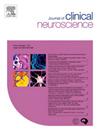Endovascular carotid artery revascularization utilizing multiple distal embolic protection strategies: active and passive flow reversal in combination with balloon assisted reperfusion
IF 1.8
4区 医学
Q3 CLINICAL NEUROLOGY
引用次数: 0
Abstract
Background
Carotid artery stenosis is a common cause of stroke. Carotid artery stenting (CAS) includes multiple approaches to endovascular carotid revascularization, including transfemoral/transradial CAS (TF-CAS/TR-CAS) and transcarotid artery revascularization (TCAR). Although CAS has declined in frequency since the development of TCAR, distal embolic protection (DEP) strategies differ between the two procedures, with studies reporting a lower risk of stroke with TCAR. TCAR uses open surgical common carotid artery clamping combined with passive flow reversal (PFR), whereas traditional TF-CAS/TR-CAS often employs a DEP device. Modifications to TF-CAS/TR-CAS include balloon guide catheter (BGC) carotid occlusion and PFR for additional DEP, mirroring aspects of TCAR.
Methods
Patients underwent endovascular carotid artery revascularization (ECAR) using either transfemoral or transradial approaches (i.e., TF-CAS/TR-CAS) with the implementation of multiple DEP strategies: proximal flow arrest with a BGC, active flow reversal (AFR) and PFR, DEP device, and balloon-assisted reperfusion (BAR).
Results
Two patients underwent successful TF-CAS/TR-CAS utilizing a DEP device in combination with novel adjuvant endovascular techniques. BGC occlusion of the common carotid artery provided anterograde flow arrest. AFR was employed during scenarios where PFR was not feasible or insufficient. BAR was performed with transient balloon occlusion of the proximal internal carotid artery during common carotid artery reperfusion and restoration of anterograde blood flow.
Conclusion
Adjuvant endovascular techniques can be employed during TF-CAS/TR-CAS that provide similar, if not more, DEP strategies to those used during TCAR. A purely endovascular approach lends itself to a multitude of specialists and eliminates wound care post-procedure, contributing to higher patient satisfaction and fewer complications.
利用多种远端栓塞保护策略的颈动脉血管内重建:主动和被动血流逆转联合球囊辅助再灌注
背景颈动脉狭窄是中风的常见原因。颈动脉支架植入术(CAS)包括多种血管内颈动脉血管重建术,包括经股动脉/经桡动脉血管重建术(TF-CAS/TR-CAS)和经颈动脉血管重建术(TCAR)。尽管自TCAR发展以来,CAS的频率有所下降,但两种手术的远端栓塞保护(DEP)策略不同,研究报告TCAR的卒中风险较低。TCAR采用开放式手术颈总动脉夹紧联合被动血流逆转(PFR),而传统的TF-CAS/TR-CAS通常采用DEP装置。TF-CAS/TR-CAS的改进包括球囊引导导管(BGC)颈动脉闭塞和PFR用于额外的DEP,反映了TCAR的方面。方法患者采用经股或经桡动脉入路(即TF-CAS/TR-CAS)行颈动脉血管内重建术(ECAR),并实施多种DEP策略:近端血流停止与BGC,主动血流逆转(AFR)和PFR, DEP装置和球囊辅助再灌注(BAR)。结果2例患者采用DEP装置联合新型辅助血管内技术成功完成TF-CAS/TR-CAS。BGC闭塞的颈总动脉提供顺行血流阻滞。在PFR不可行或不充分的情况下,采用AFR。在颈总动脉再灌注和恢复顺行血流过程中,短暂性球囊闭塞颈近端动脉进行BAR。结论辅助血管内技术可用于TF-CAS/TR-CAS,提供与TCAR相似的DEP策略。纯粹的血管内方法可以让许多专家参与,并消除手术后的伤口护理,有助于提高患者满意度和减少并发症。
本文章由计算机程序翻译,如有差异,请以英文原文为准。
求助全文
约1分钟内获得全文
求助全文
来源期刊

Journal of Clinical Neuroscience
医学-临床神经学
CiteScore
4.50
自引率
0.00%
发文量
402
审稿时长
40 days
期刊介绍:
This International journal, Journal of Clinical Neuroscience, publishes articles on clinical neurosurgery and neurology and the related neurosciences such as neuro-pathology, neuro-radiology, neuro-ophthalmology and neuro-physiology.
The journal has a broad International perspective, and emphasises the advances occurring in Asia, the Pacific Rim region, Europe and North America. The Journal acts as a focus for publication of major clinical and laboratory research, as well as publishing solicited manuscripts on specific subjects from experts, case reports and other information of interest to clinicians working in the clinical neurosciences.
 求助内容:
求助内容: 应助结果提醒方式:
应助结果提醒方式:


